Surfing waves, erasing memories and a twist on the tokamak Understand article
Science in School is published by EIROforum, a collaboration between eight of Europe’s largest inter-governmental scientific research organisations (EIROs). This article reviews some of the latest news from the EIROs.
CERN: Surfing the wakefield
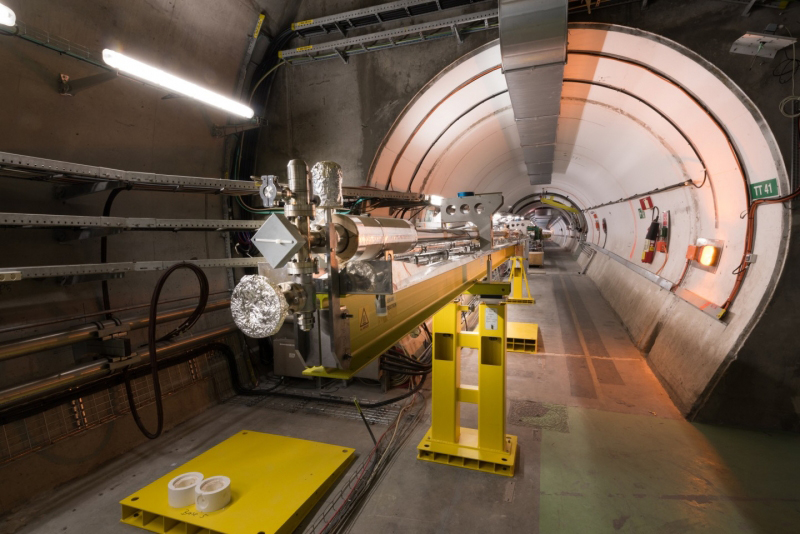
Image courtesy of Maximilien Brice/CERN
The AWAKE (Advanced Wakefield) experiment, which explores the use of plasma to accelerate particles to high energies over short distances, is due to switch on at CERN’s Super Proton Synchrotron (SPS) in late 2016. It will accelerate electrons by ‘surfing’ them on waves of electrical charge (‘a wakefield’). The project aims to prove that electrons can be accelerated to multi-GeV energies over a distance of a few metres: up to 1000 times greater than acceleration in a conventional collider of the same distance. Although far from rivalling future high-energy colliders, such as the Large Hadron Collider (LHC), wakefield accelerators could, for example, drive X-ray free-electron lasers, shrinking their size from kilometres to metres and enabling their use in labs or hospitals.
For more information see http://awake.web.cern.ch/awake/
Based in Geneva, Switzerland, CERN is the world’s largest particle physics laboratory.
EMBL: Forgetting to learn
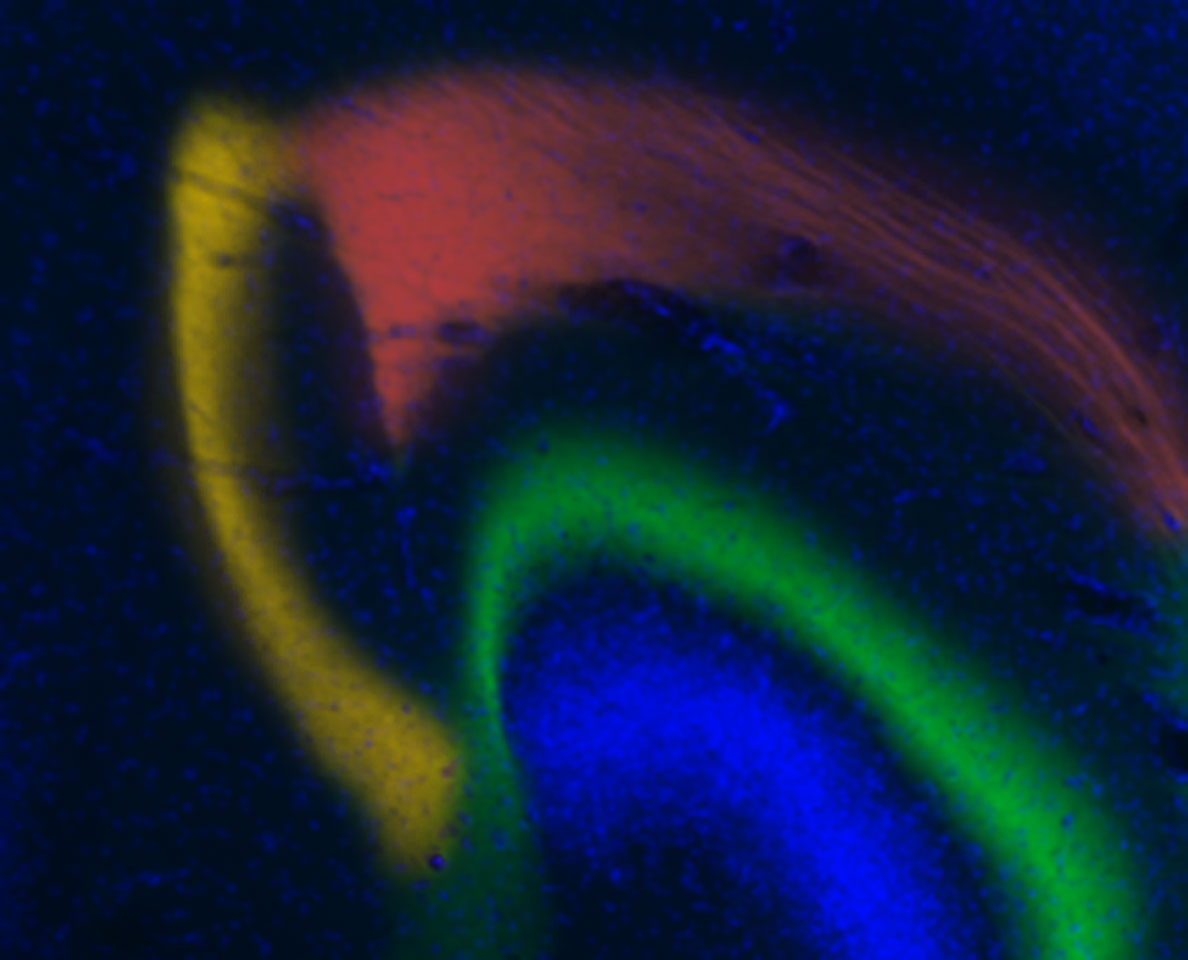
hippocampus seem to be
linked to different aspects of
learning: forming memories
(green), recalling them
(yellow) and forgetting (red)
Image courtesy of John Wood
They say that once you’ve learned to ride a bicycle, you never forget how to do it. But new research suggests that even while learning, the brain is actively trying to forget. The study, by scientists at the European Molecular Biology Laboratory (EMBL) and University Pablo Olavide in Sevilla, Spain, was published in Nature Communications. “This is the first time that a pathway in the brain has been linked to forgetting, to actively erasing memories,” says Cornelius Gross, who led the work at EMBL. “One explanation for this is that there is limited space in the brain, so when you’re learning, you have to weaken some connections to make room for others.”
See the press release and the research paper at:
Madroñal N et al. (2016) Rapid erasure of hippocampal memory following inhibition of dentate gyrus granule cells. Nature Communications 7: 10923. doi: 10.1038/NCOMMS10923
EMBL is Europe’s leading laboratory for basic research in molecular biology, with its headquarters in Heidelberg, Germany.
ESA: The magic of light

A new teaching resource containing eight light-related activities is now available to download from the European Space Agency’s (ESA) website. Combining science with art, The Magic of Light uses spectroscopes and colour wheels to allow pupils to explore how different colours of light can be produced and broken down. The resource, aimed at pupils aged between 8 and 12 years old, contains a teacher’s guide as well as a separate worksheet for the activities.
To download the teacher’s guide and worksheet, visit the ESA website.
ESA is Europe’s gateway to space, with its headquarters in Paris, France.
ESO: Teacher training on Kepler’s laws and modern astronomy

Image courtesy of
ESO/Wikimedia
The European Southern Observatory (ESO) Supernova Planetarium & Visitor Centre, in collaboration with the House of Astronomy in Heidelberg, Germany, is organising a workshop for secondary school teachers, before the building is even complete.
On 1 July, teachers from ESO member states will visit ESO headquarters in Garching, near Munich, to learn the importance of Kepler’s laws to modern astronomy. In particular, Kepler’s third law allows scientists to estimate the masses of supermassive black holes, while deviations from Kepler’s laws exhibited by galaxy rotation curves led to the discovery of dark matter.
The ESO Supernova Planetarium & Visitor Centre itself is currently under construction. This April the impressive star-roof was installed and the centre is due to open to the public next year.
For more information, visit: www.eso.org/public/announcements/ann16022
ESO is the world’s most productive ground-based astronomical observatory, with its headquarters in Garching, near Munich in Germany, and its telescopes in Chile.
ESRF: An insight into hydrocarbon research
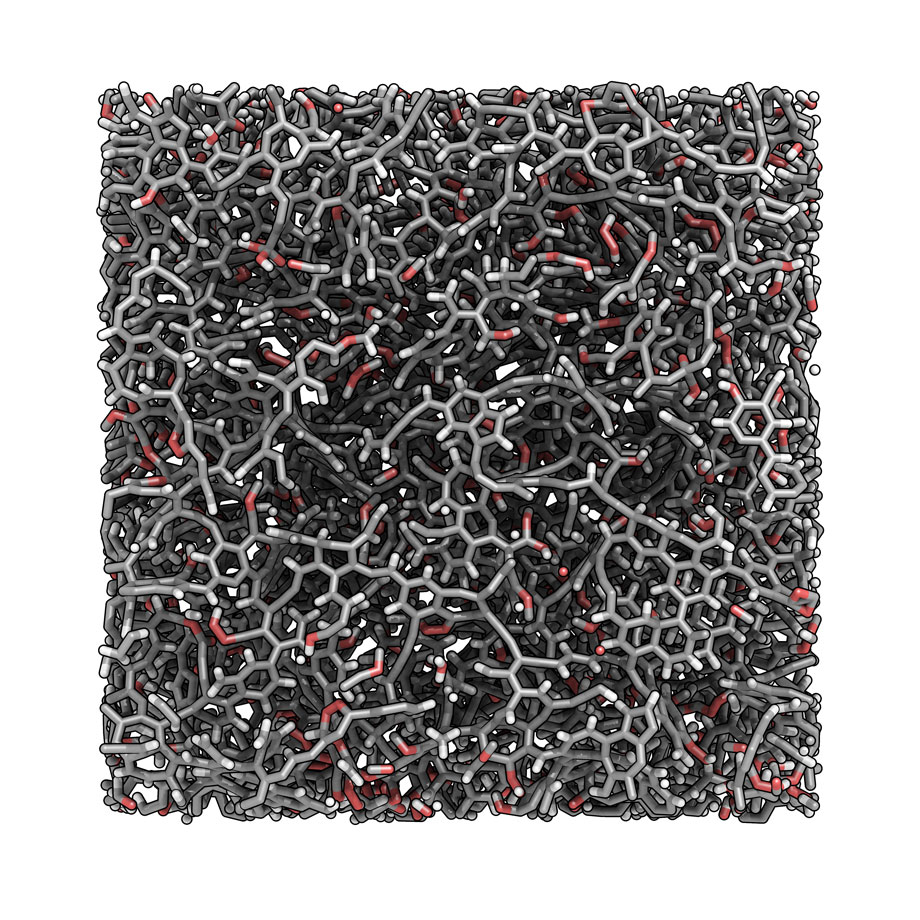
of the Marcellus kerogen
Image courtesy of Colin
Bousige (CNRS)
Until recently, little was known about kerogen, the hydrocarbons from decomposed organic matter found in shale. With the help of the European Synchrotron Radiation Facility (ESRF) however, researchers from the French National Centre for Scientific Research (CNRS), the Massachusetts Institute of Technology (MIT) in the USA and the University of Upper Alsace, France, have been developing molecular models of kerogen to establish more environmentally friendly extraction methods as alternatives to controversial fracking.
To collect data about the chemical composition, texture and density of kerogen, four samples were selected and studied using the ESRF. The international group of scientists combined synchrotron and neutron experiments with molecular simulations to develop the models, which Benoît Coasne, director of research at CNRS and visiting scientist at MIT, says “are a fundamental building block for unravelling the adsorption, mechanical and transport properties of kerogen”.
See the press release and the research paper at:
Bousige C et al. (2016) Realistic molecular model of kerogen’s nanostructure. Nature Materials doi: 10.1038/nmat4541
Situated in Grenoble, France, ESRF operates the most powerful synchrotron radiation source in Europe.
EUROfusion: Fusion twists and turns
Housed at the Max Planck Institute for Plasma Physics (IPP) in Greifswald, Germany, is a rather complex-looking fusion device named Wendelstein 7-X. Wendelstein 7-X is a stellarator – a fusion device that, like its better-studied cousin the tokamak, works on the principle of magnetic confinement. But there is a twist.
Both the stellarator and the tokamak use magnetic fields to contain plasmas at 108 °C, and this hot plasma is where fusion reactions can occur. But while a tokamak has a comparatively simple, symmetrical design, like that of a doughnut, a stellarator is shaped much more intricately. One easy way to describe a stellarator is to compare it to a doughnut that has been twisted many times over with numerous coils and cables protruding from it.
Image courtesy of Eurofusion
Some fusion researchers believe that although stellarators are complicated to design, they might be better at holding the hot plasma in place long enough for fusion reactions to occur. Wendelstein 7-X is an engineering and modelling feat, not only because it is the world’s largest stellarator with a diameter of around 16 metres but also because it is expected to be able to confine the plasma discharges for up to 30 minutes.
On 3 February 2016, Wendelstein 7-X began its first experiments with hydrogen plasmas. The important milestone was marked by the visit of German Chancellor Angela Merkel; she was at IPP Greifswald to push the button that kick-started the experiments with hydrogen plasma.
EUROfusion, which comprises 29 member institutes and laboratories, including IPP, congratulates IPP for the achievement and is looking forward to the progress and results that come from Wendelstein 7-X.
For more details, see: www.euro-fusion.org/2016/02/wendelstein-7-x-ready-for-centre-stage-again/ and www.euro-fusion.org/2015/12/wendelstein-7-x-begins-fusion-journey/.
EUROfusion comprises 28 European member states as well as Switzerland and manages fusion research activities on behalf of Euratom. The aim is to realise fusion electricity by 2050.
European XFEL: First electrons accelerated in European XFEL
A crucial component of European XFEL has begun operation: the so-called ‘injector’. This 45-metre long injector beamline, which forms the first part of the superconducting particle accelerator, accelerated its first electrons in December 2015. The electrons reached the end of the injector in 0.15 microseconds, achieving near light speed. This is the first beam ever accelerated at the European XFEL and represents a major advancement toward the completion of the facility.
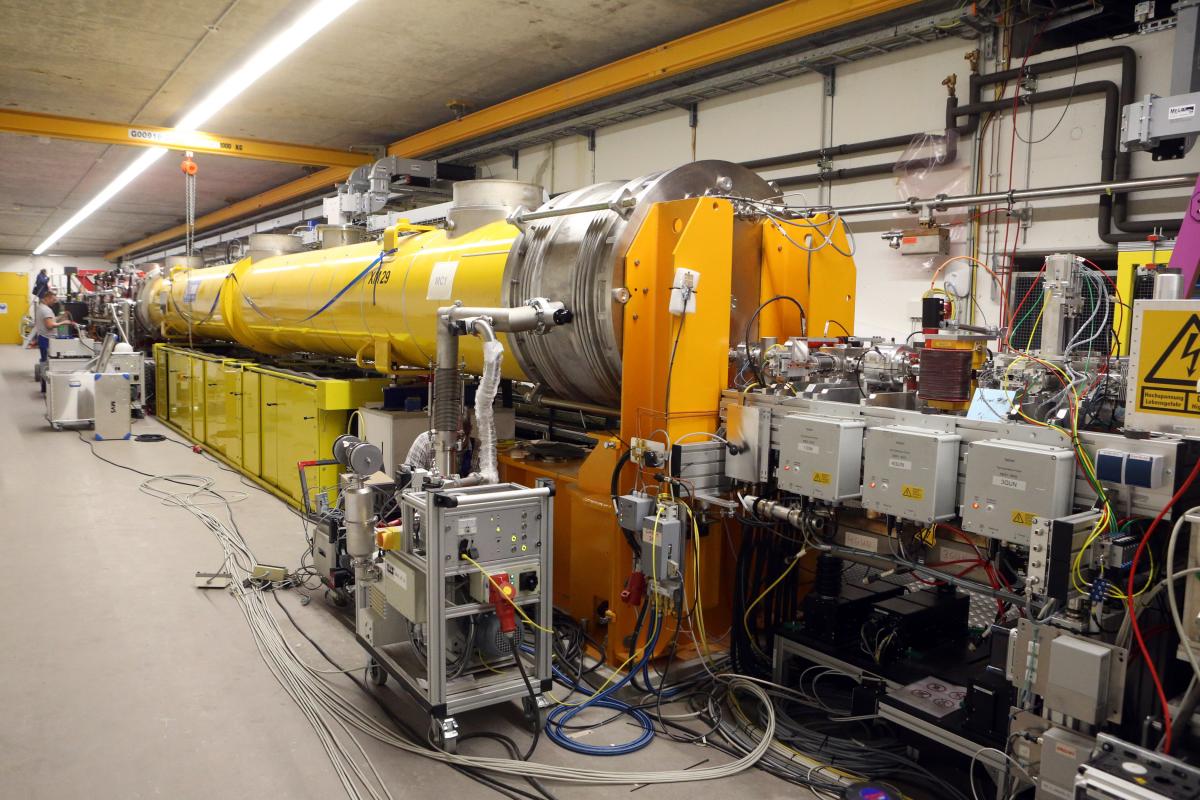
Image courtesy of European XFEL
The injector shapes highly charged electron bunches and gives them their initial energy, which is gradually increased across a 2 kilometre linear accelerator that is still being assembled. Once energised, the electrons are ready to generate the facility’s X-ray flashes, which will be used for researching matter at the atomic scale.
DESY, European XFEL’s largest shareholder and close partner, is responsible for the construction and operation of the electron injector and the remainder of the linear accelerator. Components for the injector were produced across Europe by the 17-institute European XFEL Accelerator Consortium, which is led by DESY. The injector will continue to undergo rigorous testing while the rest of the linear accelerator is installed. The next major milestone, which is expected in late 2016, will be accelerating electrons using the full accelerator length.
See the press release.
The European X-ray Free Electron Laser (European XFEL) is a research facility currently under construction in the Hamburg area in Germany. Its extremely intense X-ray flashes will be used by researchers from all over the world.
ILL: Delivering drugs with smart nanogels
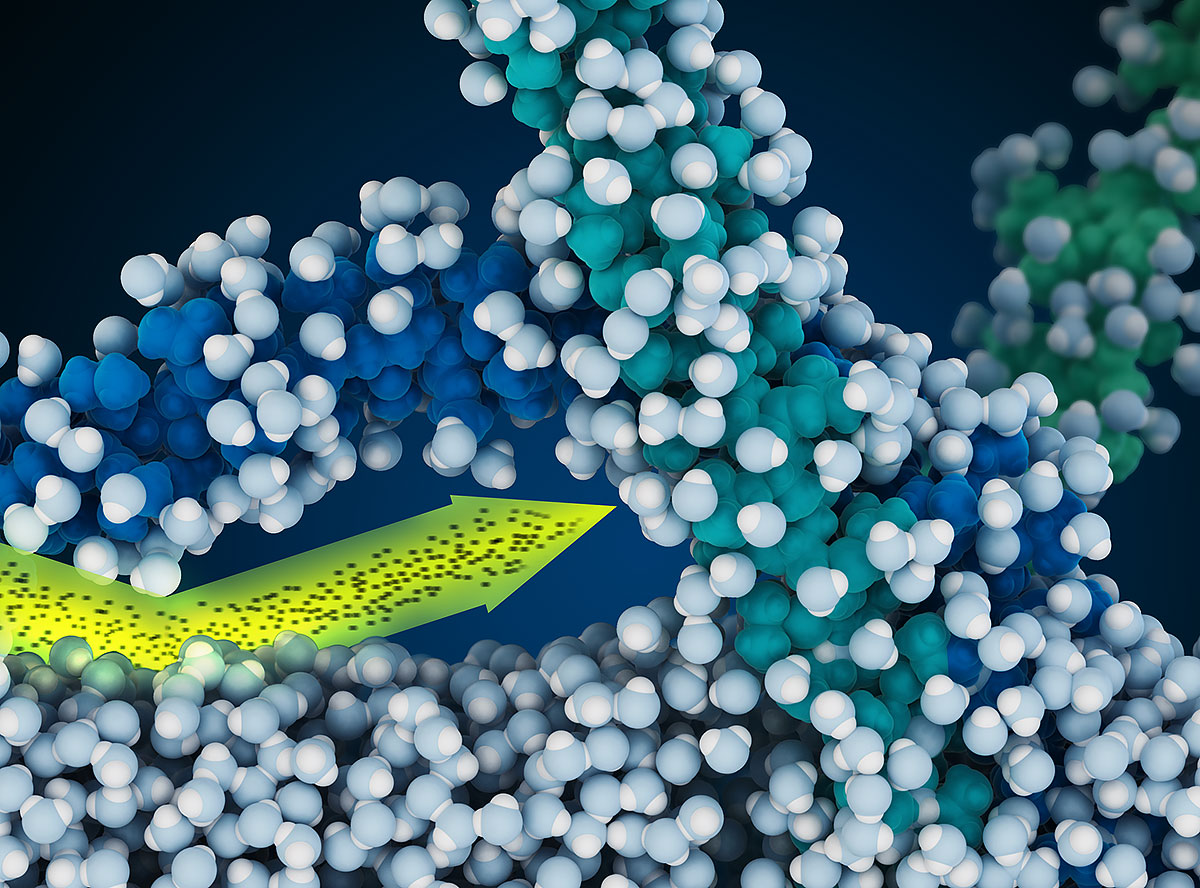
Gels are found in many everyday products, from shampoos and sunscreens to foods. Different gels have various properties and applications, but they are fundamentally composed of large amounts of liquid, usually water, confined within a flexible network of polymer chains or colloidal particles.
One type of gel with an attractive application within pharmaceuticals are nanogels, composed of nanosized networks of cross-linked polymers that can carry or incorporate macromolecules in their network structure. As ‘smart’, ‘switchable’ materials, nanogels can respond to changes in temperature, and so they can be used as an intelligent drug delivery method. Recent experiments carried out at the ILL have provided important missing information on the behaviour of nanogels at interfaces, which may lead to a more patient- and user-friendly drug administration route than current methods.
See the press release and the research paper at:
Zielińska K et al. (2016) Smart nanogels at the air/water interface: structural study using neutron reflectivity. Nanoscale 8: 4951-4960. doi: 10.1039/C5NR07538F
ILL is an international research centre at the leading edge of neutron science and technology.






